AROUND THE PARK AGAIN By Sharon Lee Tegler
No matter what the season, pulling into a space on the parking lot at Woods Memorial Presbyterian Church can be a surprising and delightful experience thanks to thoughtfully designed islands of plants and flowers between the rows.
In the spring, visitors approaching the entrance to Woods can’t help smiling as they walk past the lovely “Bell garden” with its profusion of Lynnhaven Carpet flowers that resemble daisies. An early blooming native, Lynnhaven Carpet is both an erosion control and a food source for early emerging bees.
Among other early bloomers in the parking lot gardens are Common Blue Violets, Golden Ragwort with its cheerful yellow petals, and the native flowering shrubs Black and Red Chokeberry, Spicebush, Fothergilla, and New Jersey Tea.

By summer, a total of eight parking lot islands are abloom with colorful native Coneflowers (Echinacea) and Black-Eyed Susans (Rudbeckia) augmented with multi-hued Zinnias.
All eight were specifically designed by the Woods Gardening Team as pollinator gardens and have been a tremendous success. Bees and butterflies constantly flit among the blooms and birds alight singly or in flocks to sample seed heads.
By autumn, Common Boneset and pale purple asters have added color to the gardens as some flowers begin to fade. Both attract even greater numbers of bees and butterflies.
According to Woods Garden Team co-leaders Peggy Newman and Karen Royer, the idea for the innovative parking lot gardens was born three years ago.
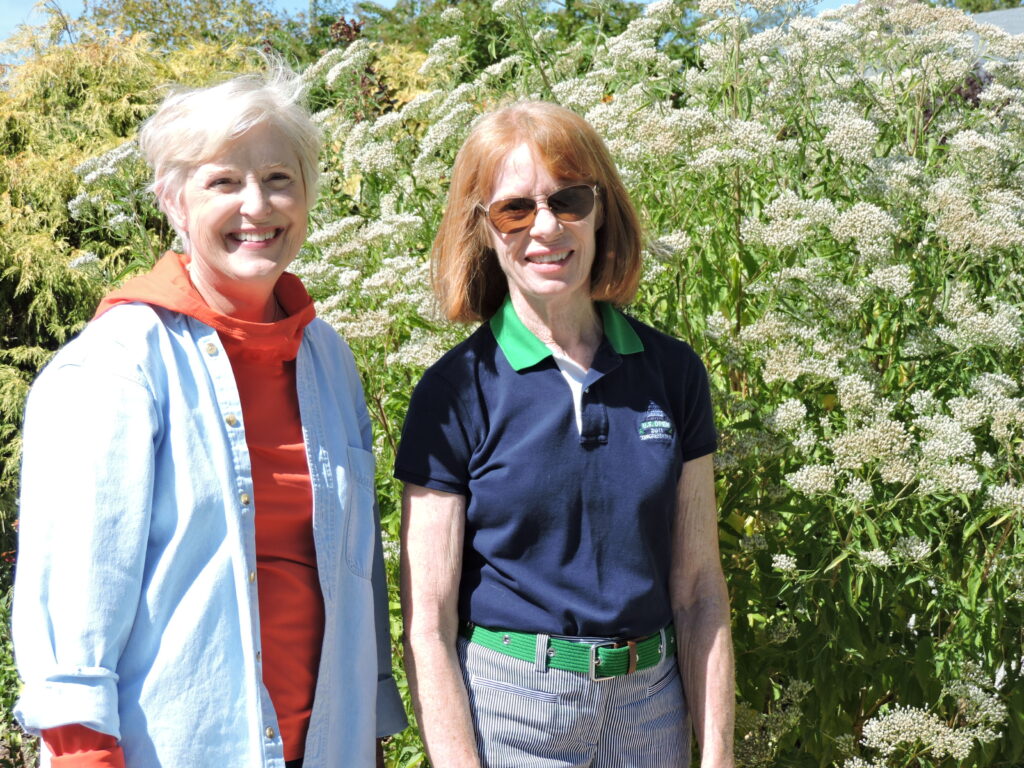
“Peggy, who really heads our group and was the organizing force, convened a group of us at her house,” Royer said. “She explained that horticulturists were alarmed that the bees and butterflies that pollinate crops were disappearing and urged all gardeners to include native plants that attract them in their landscapes. We all liked her idea and seconded her motion to plant some.”
For many years, gardener Jane Iglehart and her husband Charlie cared for the church’s plants and flowers but moved on and were succeeded by the late Elizabeth Wyble. Thereafter, professional landscapers maintained the grounds but kept the ornamental shrubs and flower beds just as they were.. There were no native plants in the gardens.
Eager to heed horticulturists’ and ornithologists’ warnings and halt the disappearance of birds, bees, butterflies, moths and other pollinators by adding native plants, Peggy and the group set a goal of dedicating 70 percent of the Woods campus to them.
The planting project was a learning experience for all of them. Researching daylillies, hostas, iris and other plants already established on Woods grounds, they found out they were not native plants. They were wondering what to do when they received help from an unexpected source.
Round Bay resident Alison Milligan introduced herself to Royer during a Green Give environmental fundraising event. Retired from the military, the former engineer is a master gardener, a watershed steward and an expert on Maryland native plants. Though not a church member she volunteered to work with the group and her advice has been invaluable.
A central question for the group was “where do we plant the native species?” Looking for spaces that had full sun exposure, it occurred to the group that the islands between rows in the parking lot had full sun all day. But they worried that the soil would be too poor until Milligan assured them that Maryland’s native plants do well in poor soil, are drought resistant and absorb storm water preventing run-off and erosion.
Armed with a U.S. Fish & Wildlife Service guide obtained by Newman – called “Native Plants for Wildlife Habitat & Conservation Landscaping: Chesapeake Bay Watershed” – the 22 member team began. Thanks to grants from Unity Gardens, they created a total of one large and 30 discreet gardens. Within a year, pollinators and wildlife were already visiting them.
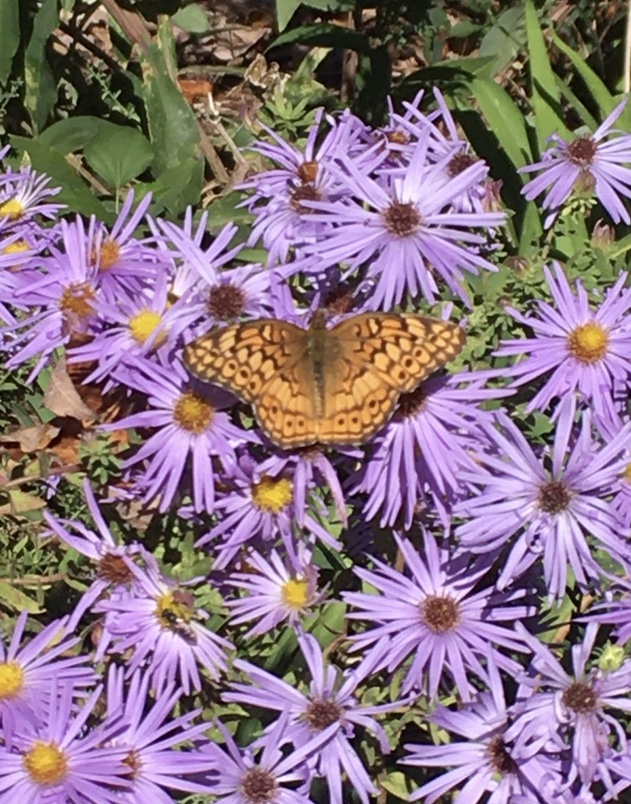
This Aster loving butterfly is probably a Variegated Frittilary.. Photos by Karen Royer
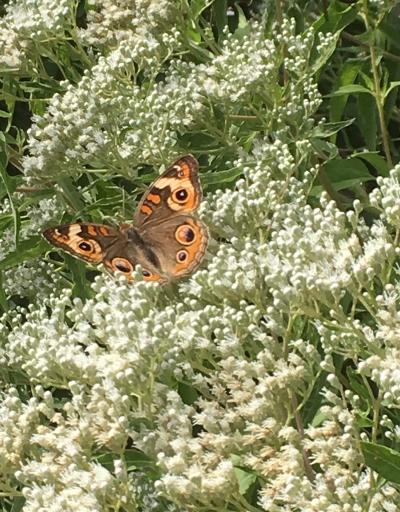
In autumn, purple asters, Common Boneset and Viburnum attract butterflies by the hundreds.
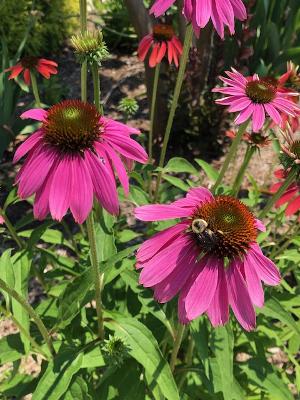
However, bees seem drawn to Coneflowers, Black Eyed Susans and Zinnias…when not dueling with the birds for landing space on their seed heads.
In addition to Alison Milligan, the Woods Gardening Team is fortunate to have two other master gardeners – Karen Strange and Frank Goetschius – among its ranks. The group’s projects have expanded to include plantings that capture storm water runoff and control erosion.
” For erosion control, we planted Lynhaven Carpet and Asters along with 200 plugs of Coneflowers that the birds just love,” Newman reported. “As autumn approaches we leave the heads of both Coneflowers and Black Eyed Susans in place as they are an important winter food source for birds.”
In the spring, the team added new plants called Winecups for color and because they are good for stopping erosion. Note the sign identifying them. Signs identifying the plants in each of the gardens are greatly appreciated by those who stop to admire them.
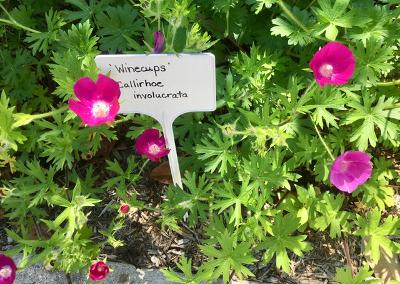
This summer, a brand new erosion control project designed by Milligan was carried out following the long-awaited repaving of the road between Woods Church and office buildings fronting on B&A Boulevard. Being good stewards of the land surrounding the church, the group was well aware that the rainwater from the part of the property overlooking the road ran directly downhill, eventually draining into the Magothy River.
To counter that effect, they planted over 100 native shrubs and plants along the newly paved road including American beautyberry, inkberry, chokeberry, American spreader hollies, New Jersey tea, witch hazel, fothergilla, arrowwood viburnum, St John’s wort and amsonia. The plants were chosen to secure the hillside from erosion and to provide flowers and food for birds and pollinators.
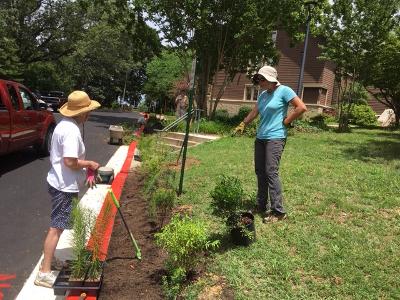
For information about Woods Memorial Presbyterian Church and its many groups, missons and ministries visit http://www.woodschurch.org/ .
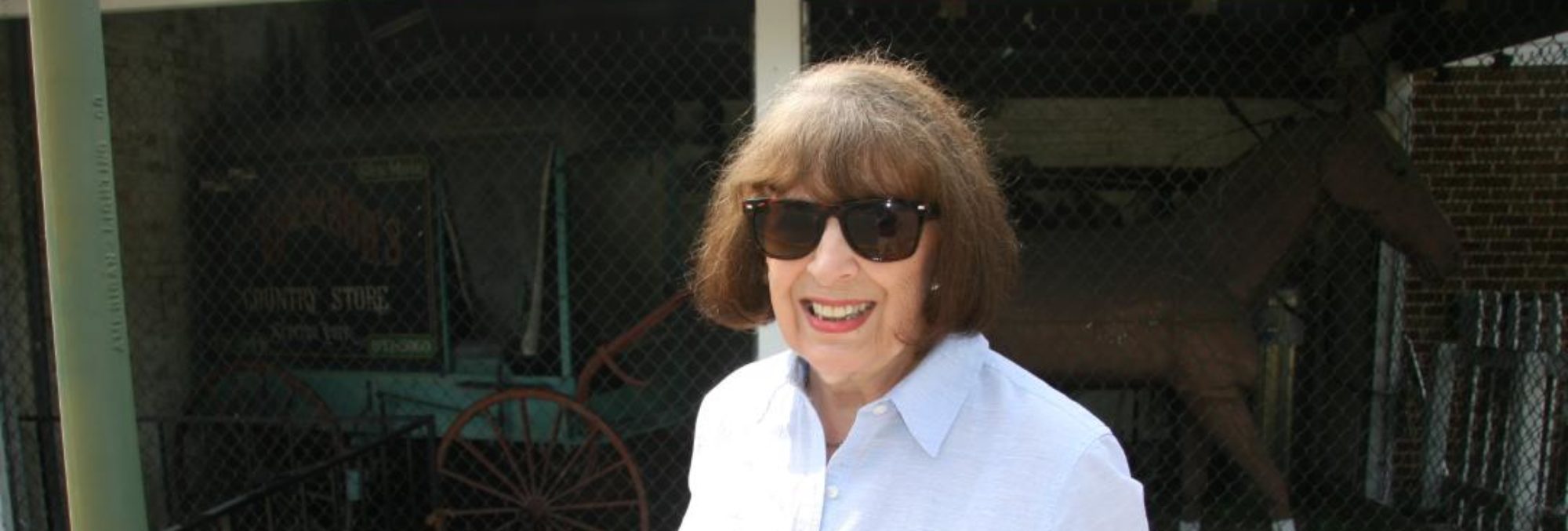
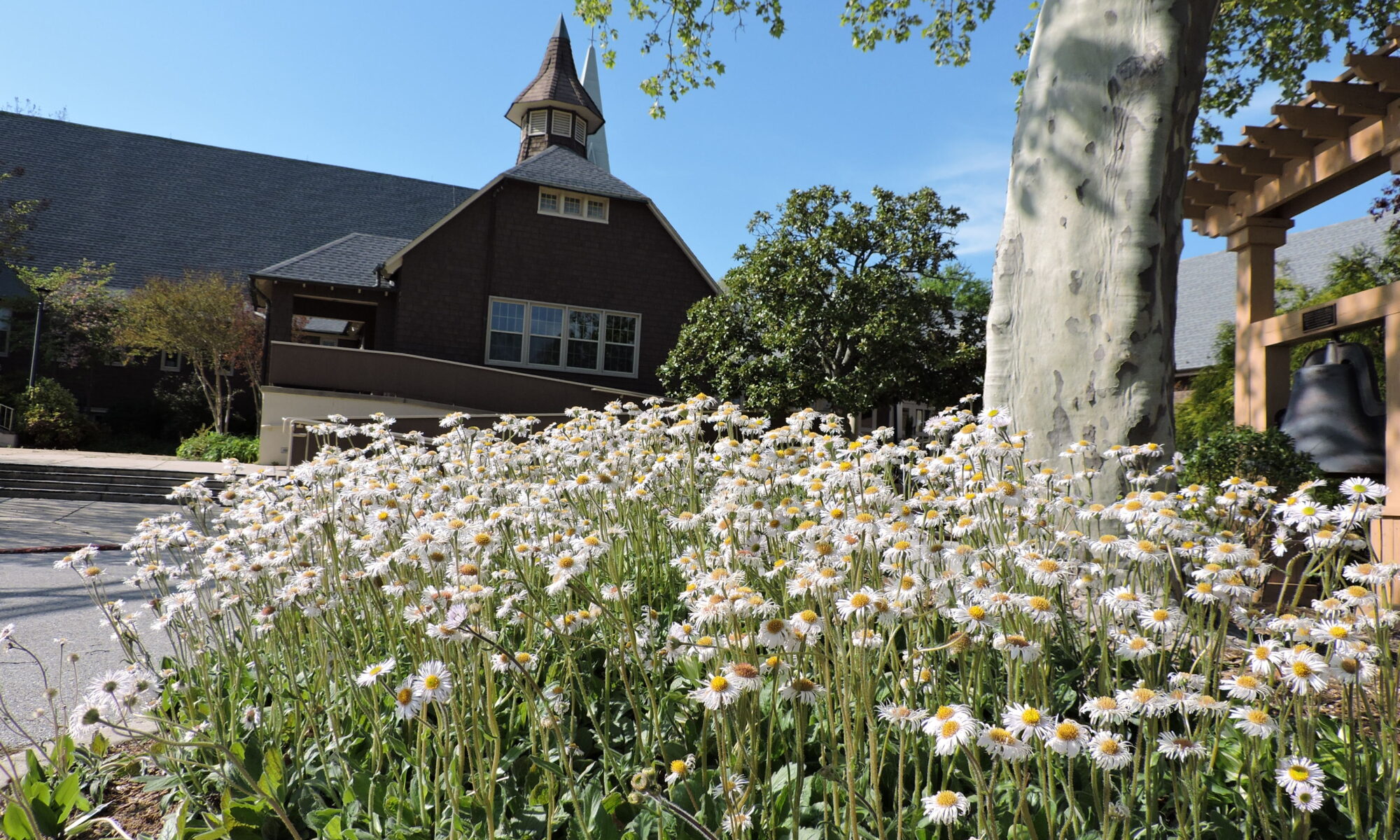


Beautiful and inspiring article Sharon Go gardeners!
Amazing thought and effort!
So proud of you ALL and Woods!